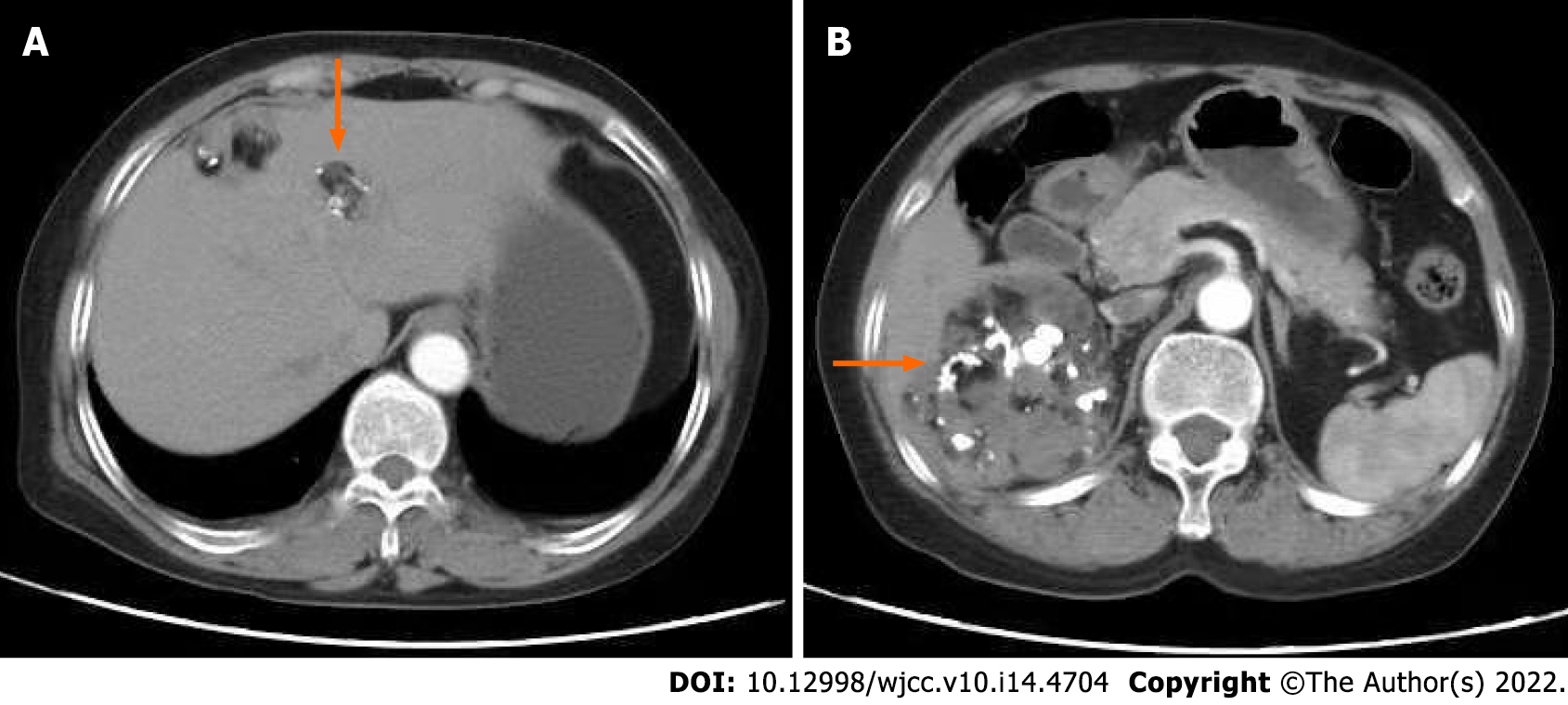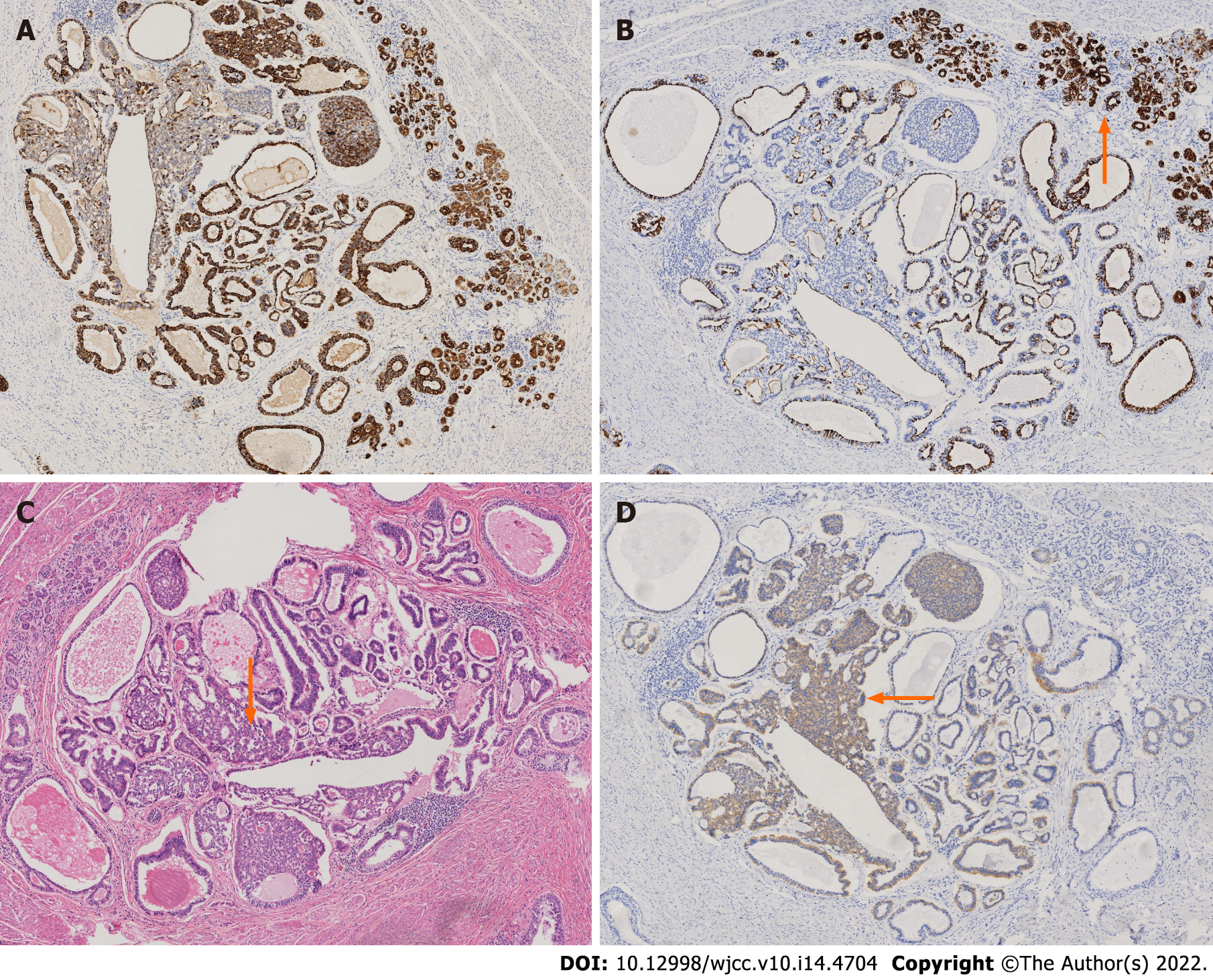Copyright
©The Author(s) 2022.
World J Clin Cases. May 16, 2022; 10(14): 4704-4708
Published online May 16, 2022. doi: 10.12998/wjcc.v10.i14.4704
Published online May 16, 2022. doi: 10.12998/wjcc.v10.i14.4704
Figure 1 Abdominal computed tomography showed multiple masses in the abdominal cavity.
A: Showing three small masses in the liver; B: Showed the largest one was located in the posterior peritoneum next to the sixth segment of the right liver. The largest one was located in the posterior peritoneum next to the sixth segment of the right liver, three masses were present inside of liver and one mass was in the right pelvic floor.
Figure 2 Postoperative histopathology combined with immunohistochemistry analysis demonstrated purely mature teratomatous tissues.
A: Shows that the pathological immunohistochemical results are positive for cytokeratin; B: Shows that the pathological immunohistochemical results are negative for cytokeratin 7; C: Shows that the pathological immunohistochemical results are is HE staining; D: Shows that the pathological immunohistochemical results are positive for cluster of differentiation 56. The pathological results were obtained under a microscope with a magnification of 40 times, in which figure A is cytokeratin (+), figure B is cytokeratin 7 (-), figure C is HE staining, figure D is cluster of differentiation 56 (+), and orange arrows mark a large number of nerves endocrine cell aggregation, and all pathological results showed no immature neural tube, suggesting a mature teratoma.
- Citation: Hu X, Jia Z, Zhou LX, Kakongoma N. Ovarian growing teratoma syndrome with multiple metastases in the abdominal cavity and liver: A case report. World J Clin Cases 2022; 10(14): 4704-4708
- URL: https://www.wjgnet.com/2307-8960/full/v10/i14/4704.htm
- DOI: https://dx.doi.org/10.12998/wjcc.v10.i14.4704










